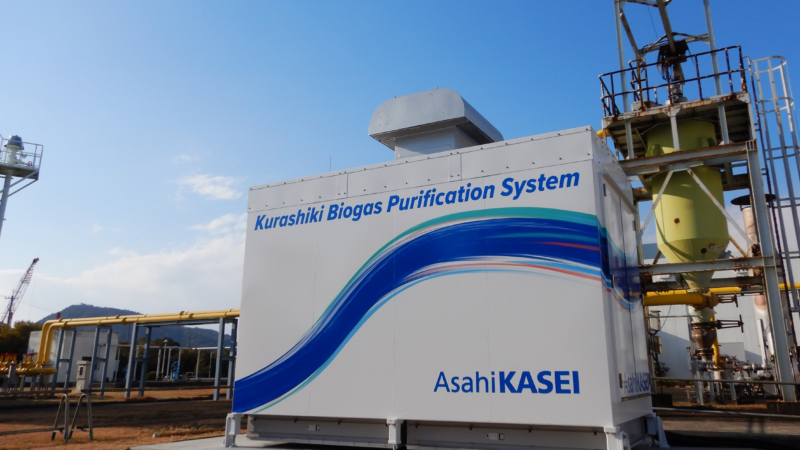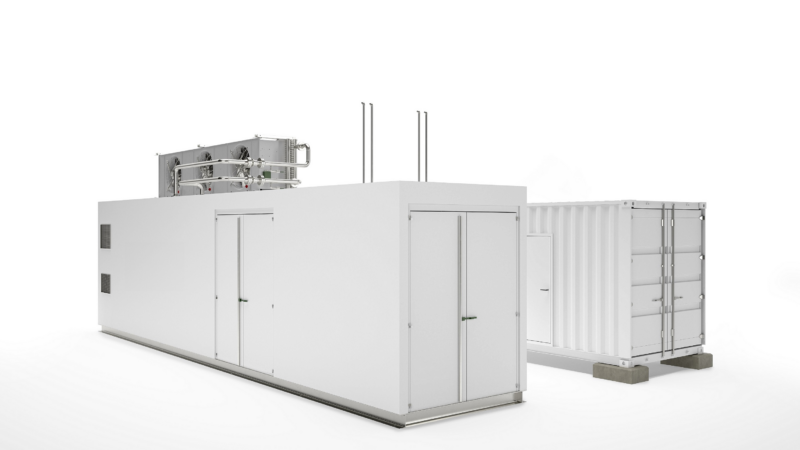The global market leader for solar tracking technology observes worldwide trend to self supply and decentralized power generation structures
Horb am Neckar, Germany, April 23rd, 2011. Energy turnaround, financial crisis and rising electricity prices lead to the development of decentralized structures in the energy sector. All over the world, municipalities, medium-sized companies and private households become independent from public supply networks, thanks to solar power they have generated themselves. According to DEGERenergie, global market leader for solar tracking systems and inventor of the patented MLD technology, this trend has gained momentum in the last few months.
The energy of the future is green and it is generated where it is consumed. This is made possible not least thanks to small-scale units for the generation of solar energy with several properties that are advantageous in the complicated times we live in. They are manageable and easy to control, do not require expensive network infrastructures and render the consumer independent from political and economic uncertainties and rising energy prices.
This is particularly interesting against the background of the striking global upheavals of this decade: Fukushima and the energy turnaround, rising public debt, the financial crisis, the emergence of China as the next economic powerhouse, the rapidly rising energy demand along with the increasing exploitation of fossil fuels.
And additionally, there is the increasing skepticism of the people about „huge“ solutions. In this respect, there is currently a highly controversial discussion about the massive expansion of the existing electricity infrastructure and the consequently increasing energy prices.
This discussion, by the way, is particularly controlled by the large energy suppliers and usually does not consider the fact that decentralized and local generation of solar energy for self-supply is no longer a problem with today“s technologies. The only requirement: Solar energy generation becomes more efficient and decentralized structures are developed quickly without hesitation. Thanks to a solution like this, huge and expensive power lines, for example to transport energy from offshore wind parks in the North Sea to southern Germany, are no longer necessary.
Today, even the storage of generated solar energy, which is often mentioned as an unsolved problem, can be realized under economically acceptable conditions. It is necessary to guarantee energy supply even when no solar energy can be generated: in the night or under unfavorable weather conditions.
Independent energy supply – possible even today
Even today, Artur Deger has developed a feasible solution based on his MLD technology. The installation in Schopfloch, a community located in the German Black Forest, works with conventional solar modules in combination with DEGERenergie solar tracking systems and storage units.
Thanks to this combination, the DEGERenergie founder and CEO each year generates around 6,000 kilowatt hours on a collector surface of not more than 22 qm². This way, he covers the demand of his office, private household and two electric vehicles and becomes largely independent of the public supply network. Thanks to modern storage solutions, power failures or periods when the sun does not shine are not an issue.
The total gross costs of the facility are about 25,000 Euros. In other words: Artur Deger has made the dream of many energy customers come true for himself: a stable electricity price for 25 years on today“s level. This calculation includes all costs: The system itself, financing, maintenance and servicing.
And so it has been proven: Generation of energy for self-supply with photovoltaic tracking technology and respectively independence from public energy suppliers and there prices is possible already today – and at an absolutely attractive price,
No feasible alternative
However, not only in Germany, there is a trend of decentralized generation of solar energy. In other regions in the world it is indispensable, as there basically is no practical alternative. Particularly in sparsely populated areas, it is not possible to set up a comprehensive grid that would reach all consumers. On the one hand, this would be too expensive in the face of empty state coffers and on the other, expanding the grid would simply take too long.
For instance in India, structural deficiencies are driving the trend of decentralization. There is a lack in capacity as well as in necessary infrastructure. In Australia, however, particularly the transport of electricity is a problem. More and more consumers in the Australian outback and in other remote areas are replacing their diesel generators with solar installations.
Anyway, according to the observations of DEGERenergie, in many regions in the world there is a growing interest in self-generated solar energy and alternatives to the public supply network. This concerns private households and farmers as well as medium-sized companies and, increasingly, also municipalities and other public institutions.
Irrespective of the current political discussions, Germany once more takes a pioneering role in this area. Although subsidies guaranteed by the government have been reduced as of January 1, 2012, the government still offers targeted subsidies for solar energy generation for self-supply and operation of small-scale units. In the meantime, tariff structures with the same logic are also planned in Spain and Canada and in 2013, Italy plans to introduce a tariff following the German example.
MLD technology for the highest yield
Whether for political, economic or ecological reasons and whether for private households, companies or municipalities – when a decision in favor of solar energy is made, each supplier wants to get the highest return for his investment. For this reason, DEGERenergie“s MLD tracking systems are the first choice for many investors. Thanks to this technology, yields can be increased by up to 45 percent compared to fixed systems.
And this news goes around. An ever growing number of municipalities contact DEGERenergie, that, in order to become independent of the rising energy prices in the long run, operate or plan small and medium-sized solar parks, for example on conversion areas like former landfill sites.
Self-supply pioneers
Self-supply and feeding into the public grid – more and more medium-sized companies, many of which are based in the German state of Baden-Württemberg, appreciate this way of securing the future of their business.
Not only do they ensure their energy supply in the long run, they also benefit from stable and long term predictable costs, in contrast to public energy prices.
Heizplan AG, based in Gams in Switzerland, for example, has been committed to sustainable energy supply since 1983, specializing in photovoltaics, solar thermal heating and heat pumps. In 2010, Heizplan opened its new manufacturing and office premises in a so-called plus energy building. With a total energy consumption of about 13,000 kWh per year and a usable energy generation of more than 58,000 kWh per year, the company generates more than four times as much energy as the building itself consumes. For electricity generation, Heizplan among other technologies deploys MLD systems.
Another example is the car dealership Hugo Kleinmann in Hechingen in Swabia. Since 2011, the company is generating the energy for its exhibition hall, management and garage with four photovoltaic tracking systems. Only surplus electricity is fed into the public supply network.
DIgSILENT, located in Gomaringen near Tübingen, is a worldwide leading supplier of simulation software for the planning and operation of energy supply systems. Recently, the company has implemented a new solar energy project with twelve MLD systems.
Ernst Pfeffer GmbH, specialist for mechanical engineering from Eutingen im Gäu generates solar energy on its premises as well. CEO Raimund Pfeffer: „We expect that the systems will pay off in 12 to 14 years. Then, we will have electricity for free.“
The MLD principle
The MLD (Maximum Light Detection) principle relies on solar modules tracking the brightest position in the sky as precisely as possible to maximize energy yield. This is achieved by a patented control module, an acrylic pyramid (tetrahedron) with an edge length of 80 mm.
It permanently measures the intensity and angle of the incident rays of light and continuously aligns the solar modules according to the current light conditions. This way, the modules also generate energy from diffuse light shining through the clouds, as well as light being reflected by water or snow surfaces. On average, the additional yield achieved with this method is up to 45 percent higher than with fixed solar panels and approximately 8 percent higher than with astronomical tracking.
For more information: www.DEGERenergie.com.
Note for editorial staff:
You can download printable image material here (http://www.degerenergie.de/english/news/press-releases.html) at the end of the text. Of course, you can also obtain different printable image material from: Herbert Grab, Phone: +49 07127-5707-10, E-mail: herbert.grab@digitmedia-online.de.
About DEGERenergie (www.DEGERenergie.com):
DEGERenergie is the leading manufacturer with the world“s largest product range of single and dual-axis solar tracking systems. The company“s market position is based on the unique patented Maximum Light Detection (MLD) technology developed by Artur Deger, which makes it possible to maximize the yield of solar power plants with an „intelligent“ control. With the DEGERconecter, the solar modules are always aligned according to the brightest position in the sky with the highest energy yield. This way, the overall energy yield of solar power plants with MLD tracking is on average 45 percent higher than that of fixed systems and this difference is even more pronounced for peaks. With more than 47,000 systems installed in 46 countries, DEGERenergie is the global technological market leader. The company offers its customers all product related solutions – from the development and planning, production and sales to maintenance and service.
In its headquarters in Horb (Germany), its subsidiaries and supplier companies, DEGERenergie is currently employing a staff of nearly 400. The company was established in 1999 and in 2001 won the Inventor Award of the German state of Baden-Württemberg for the MLD control module DEGERconecter. In 2005, DEGERenergie opened its first subsidiary in Spain, followed by subsidiaries in the USA and Greece in 2009. Since summer 2011, production is also up and running in Australia. The company“s production sites are located in Germany, Australia, Canada and the USA. CEO is Artur Deger.
You can“t always rely on the weather. But you can rely on an intelligent control system from DEGERenergie.
Kontakt:
DEGERenergie GmbH
Carmen Spohn
Industriestraße 70
72160 Horb
+49 (0) 7451-539 14-0
http://www.DEGERenergie.com
sales@DEGERenergie.com
Pressekontakt:
digit media
Herbert Grab
Schulberg 5
72124 Pliezhausen
herbert.grab@digitmedia-online.de
+49 (0)7127-570710
http://www.digitmedia-online.de





